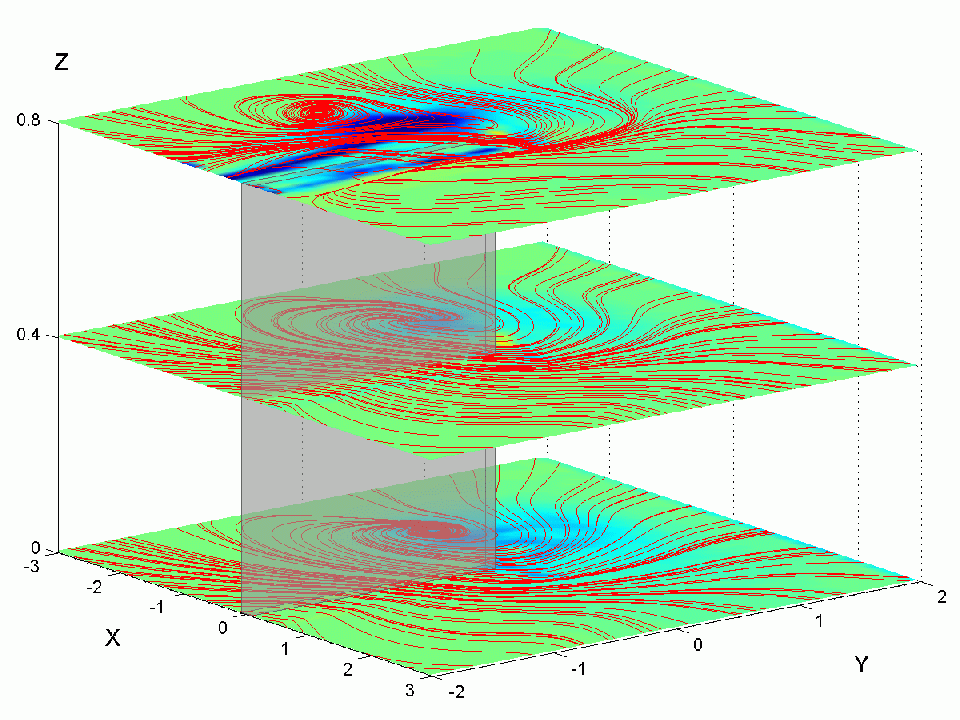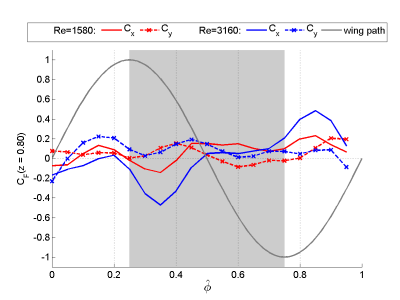Observations of Flow Around A Flapping Rigid Plate
Overview
The objective of this study is to establish a quantitative method for observation of flow structures created by unsteady locomotion. Unsteady flow appears regularly in natural condition for the use of biological locomotion, such as locomotion of fish or swimming mammals and flying animals. The physics of such locomotion is under intense investigation because of interests in producing small-scale autonomous flight-borne vehicles.
Controlled experiments were performed by modeling the locomotion as a flapping rigid plate with motion modeled as one axis sinusoidal oscillations at one end of the plate parallel to the chordwise axis in zero freestream. Flow measurements was performed with stereo PIV and the flow was evaluated by control volume analysis. Quantitative visualization shows the existence of flow structures dependent to acceleration and deceleration of the plate and flow structures along the span of the plate that appears from flow instability. The dominant contributions to force generation is caused by the deceleration of the flow due to the obstruction of the plate.
The above figure shows visualizations based on velocity measurements with stereo PIV. The figure shows two vortical systems visualized by the streamlines. These vortical systems appear due to the acceleration and deceleration of the plate. The more dominant vortical structure is visualized by the colored plates. It stretches from the leading edge to the mid-chord forming a horseshoe vortex.
The above figure is the result of control volume analysis of the plane surrounding the leading edge of the plate. Cx is the force coefficient along x and Cy is the coefficient along y. The coefficients for two Reynolds number is compared with the path of the wing. Delay between the acceleration of the wing with Cx can be explained due to the interaction of the plate with the dominant vortical structure. The average momentum flux is similar for both Reynolds number.
Related Reports
- Suryadi, A., Ishii, T., Obi, S. The Effect of Wing Tip Vortex To Force Generation of A Flapping Wing. TFEC-7, Sapporo, Japan, Oct. 14-16, 2008.


